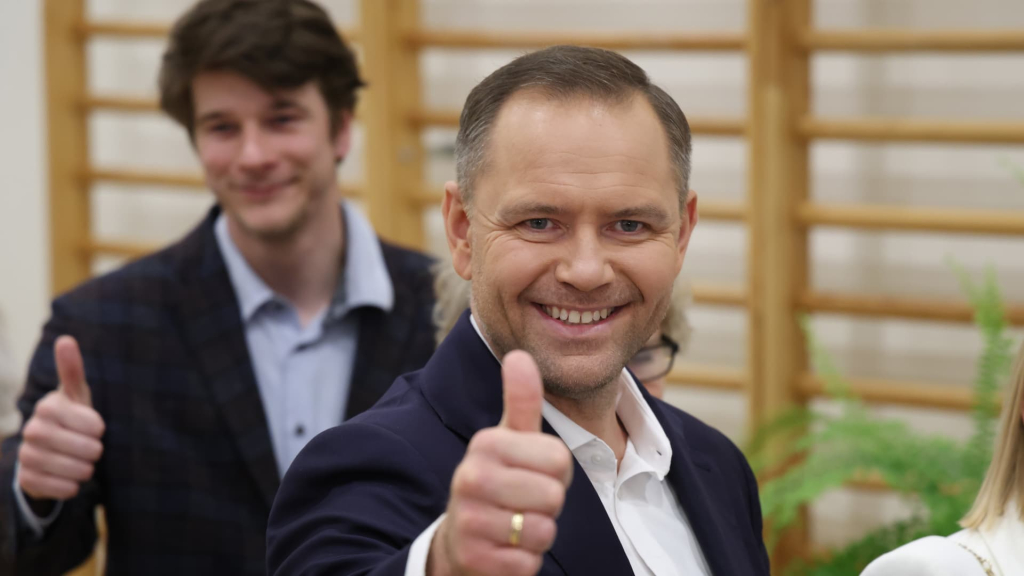Karol Nawrocki, the nationalist candidate supported by U.S. President Donald Trump, has emerged victorious in a closely contested runoff to become Poland’s new president. His victory signifies a potential shift in the country’s political landscape, challenging the current pro-EU government.
The final vote count revealed Nawrocki, representing the opposition Law and Justice (PiS) party, received 50.89% of the votes, edging out Warsaw Mayor Rafał Trzaskowski, who garnered 49.11%. Initial results prior to poll closure had placed Trzaskowski in the lead.
Nawrocki will take over from fellow conservative Andrzej Duda, who narrowly defeated Trzaskowski in the previous election held in 2020. He is set to serve a five-year term and has the option to seek re-election thereafter.
This election has drawn keen attention from across Europe, the United States, and neighboring Eastern European nations like Russia and Ukraine, raising significant questions about Poland’s future alignment with the European Union (EU) and Ukraine.
While the presidency in Poland is largely subordinate to the parliament, the head of state possesses a crucial veto power over legislation. Duda has previously utilized this power to block various reforms proposed by Prime Minister Donald Tusk’s coalition.
As the sixth-largest economy in the EU, Poland, with its population of 37 million, was the largest net beneficiary of EU funds in 2024.
“I am confident that the EU will continue its strong collaboration with Poland. Together, we are all more robust in our community of peace, democracy, and shared values,” stated EU Commission President Ursula von der Leyen on Monday via the X social media platform. “Let us work together to ensure our common home’s security and prosperity.”
Poland, traditionally a strong supporter of Ukraine amid the ongoing Russian aggression, has provided extensive security and logistical support to Kyiv. Earlier this year, it also assumed the rotating EU presidency, taking over from Hungary, which is viewed as a close ally of the Kremlin, with the motto “Security, Europe!”
However, during his campaign, Nawrocki adopted a more critical position toward Ukraine, citing claims of mistreatment by Ukrainian President Volodymyr Zelenskyy. He further dismissed Ukraine’s longstanding aspirations to join NATO, a prospect that many believe could escalate military tensions with Russia.
A test for right-wing populism in Europe
The Polish presidential runoff serves as a significant indicator of the rise of right-wing populism across Europe, paralleling the U.S. MAGA victory under Trump in November. Nawrocki’s victory interrupts a trend of liberal successes seen in Romania and Portugal earlier in May.
U.S. Homeland Security Secretary Kristi Noem had urged Polish voters to rally behind Nawrocki during the inaugural Conservative Political Action Conference held in Poland last week, criticizing his pro-EU opponent Trzaskowski as an ineffective leader.
“Donald Trump is a proven leader for us, but you have the chance to choose an equally strong leader in Karol if you elect him,” she emphasized. “You can become that shining city on a hill that the rest of Europe and the world will admire, recognizing your strength and freedom through the election of the right leader to protect and defend it.”
Poland has cultivated a strong relationship with Washington, particularly in security matters, distancing itself from Trump’s broader criticisms aimed at many of European NATO allies who have historically struggled to meet the defense spending guideline of 2% of GDP. Poland has consistently surpassed this requirement for five years, registering a 4.12% contribution in 2024, which exceeds the U.S. commitment of 3.38%, while investing heavily in American military assets ranging from F-35s to Abrams tanks.


























